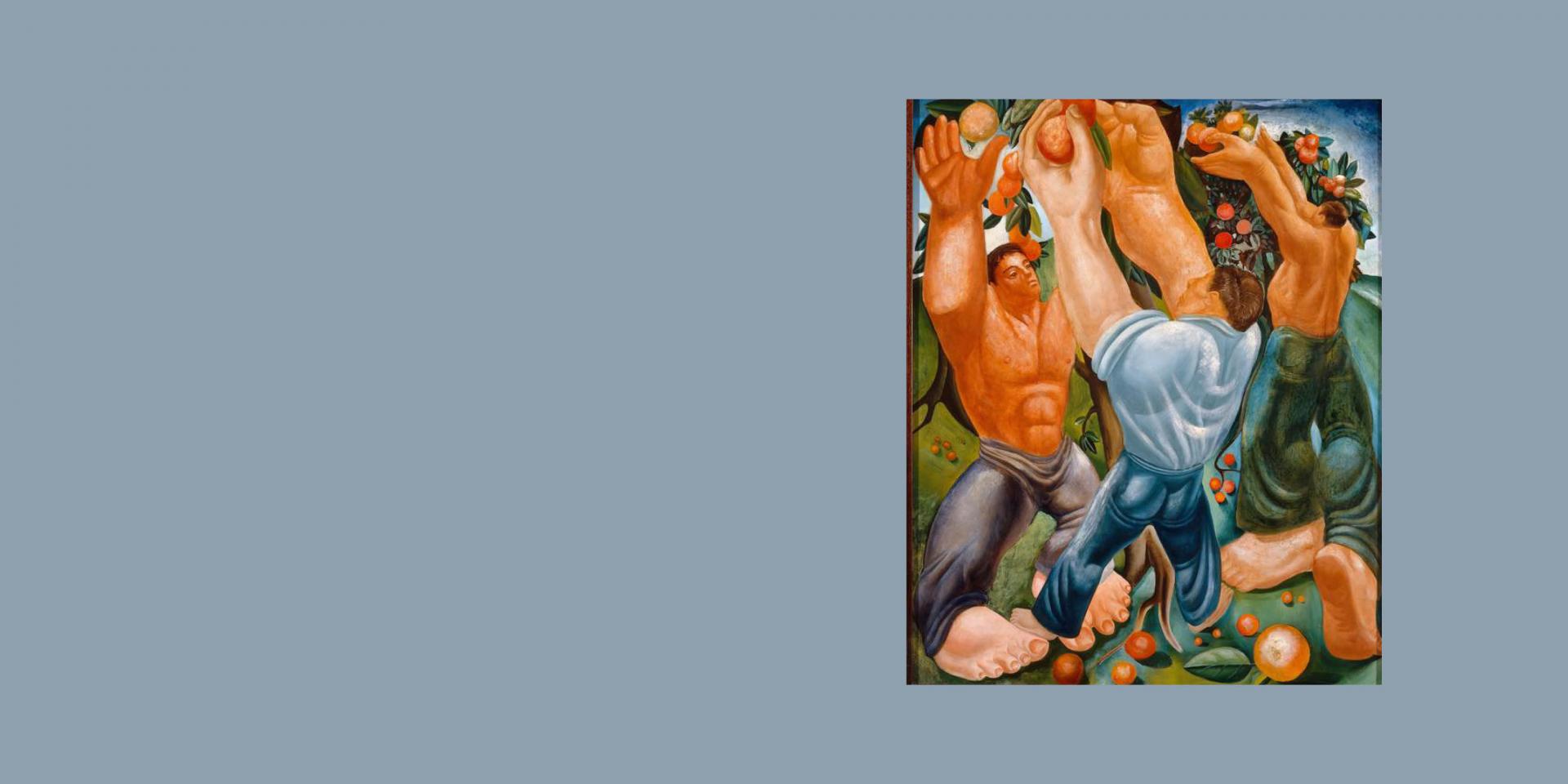America, between impressionism and realism (1918-1944)
Exhibition from June 15 to October 17, 2022
From the euphoria of victory in 1918 to the dark hours of the Great Depression, the interwar period was a time when America's booming economy came to a screeching halt. The Great Depression disrupted American society and led the country into an era of unemployment and poverty. In addition, between 1930 and 1940, an unprecedented drought unleashed dust storms and destroyed crops (the Dust Bowl), plunging the farming population of Texas, Oklahoma and Kansas into misery and exodus. These upheavals found an echo in the artists of the time. The clear, joyful, carefree painting of the Impressionists of the 1920s was soon followed by a more realistic art that did not erase social realities. Thus, Alexandre Hogue devoted numerous paintings to agricultural disasters, in which animals are seen buried under the dust. Arthur Ladow was interested in the orange pickers, farmers driven off their land by the Dust Bowl who found work in the orchards of California, in disastrous social conditions. As for Paul Meltsner, he claimed the status of manual worker for the artist, in a spirit of bringing him closer to the working class world affected by the crisis.

